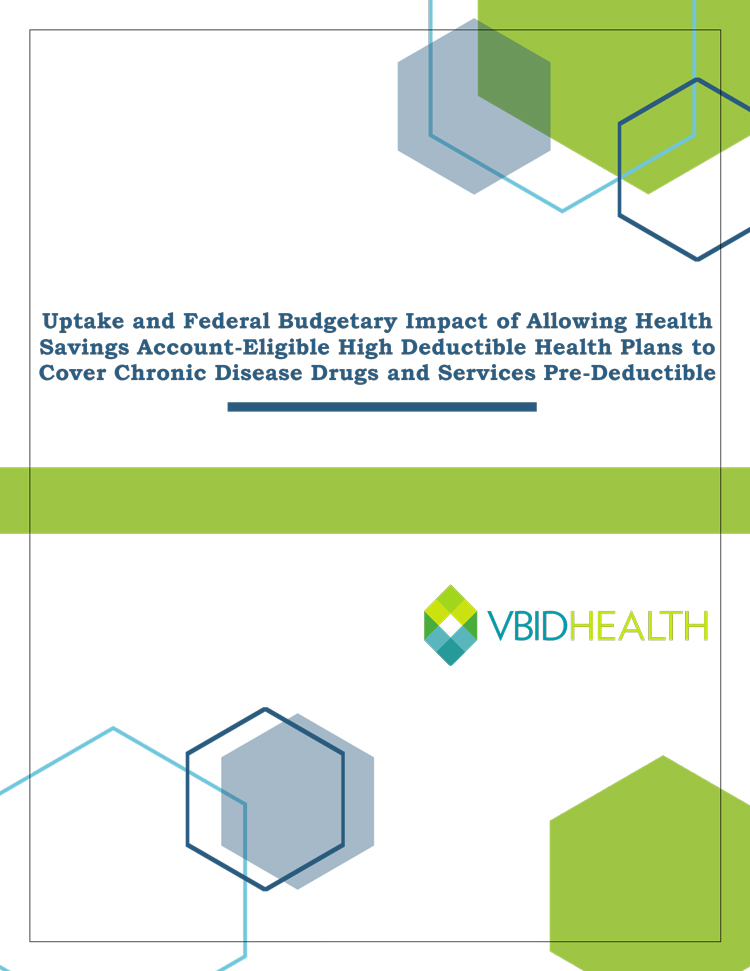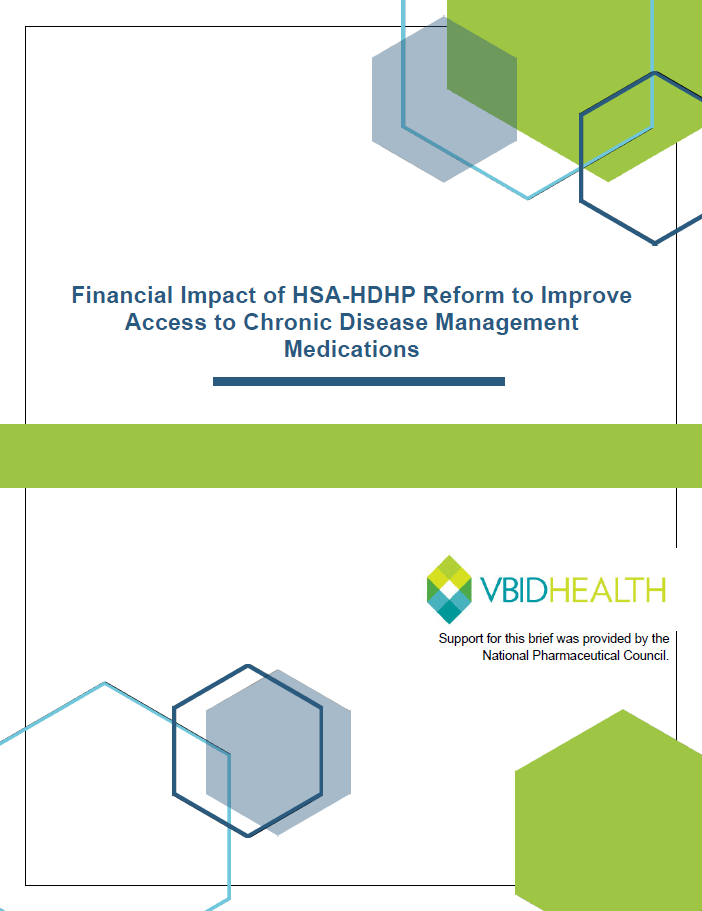Executive Summary
High-deductible health plans (HDHPs) can be harmful for people with chronic conditions or low income. Evidence suggests that health plan flexibility to cover chronic disease prevention drugs and services pre-deductible in HDHPs would improve the health of those with chronic conditions and prevent downstream costs for services such as emergency department visits and hospitalizations. Reducing financial barriers to evidence-based care for chronic conditions therefore offers an opportunity to substantially enhance clinical outcomes and reduce the long-term rate of healthcare spending growth. However, the net budgetary impact to the federal government of implementing a policy that permits Health Savings Account-eligible (HSA-eligible) HDHPs to expand secondary prevention coverage is unknown.
Accordingly, this paper aims to predict 1) how enrollees might switch plan types (i.e., “migrate”) following the introduction of a High-Deductible Health Plan + Secondary Prevention Coverage (“HDHP+”) in the employer and individual markets, and 2) the resulting implications for federal tax revenues and expenditures of this “migration”. The paper concludes that the net effect of migration across plan types results in significant HDHP+ uptake, leading to modest net savings to the federal government in three of four scenarios of employer behavior. The potential savings are largely driven by the reduction in tax expenditures as a result of people moving away from Preferred Provider Organization plans (PPOs) to the HDHP+ (“buy down”), which outweighs the tax revenue loss of migration to the more generous HDHP+ from traditional HDHPs (“buy up”). The important take-away is not the magnitude of savings for any one scenario, but the clustering of the different scenarios about budget neutrality.
Therefore, we can be relatively confident that flexibility to allow HSA-HDHPs to cover services or drugs intended to treat an existing illness, injury, or condition would likely save, if not be cost-neutral to the federal government (Figure A).

Support for this brief was provided by the National Pharmaceutical Council.
The Rise of High Deductible Health Plans and Their Consequences
More than 40 percent of Americans age 18-64 with private health coverage are now enrolled in a plan with an individual deductible of at least $1,300 or $2,600 for a family. The deductible for most HDHP members now exceeds the minimum required by law (Figure 1). Participation in high-deductible health plans (HDHPs) has grown significantly to over 71 million enrollees. Thirteen percent of employers offer an HDHP as the only health benefit option.
Increases in consumer out-of-pocket costs for health care have been associated with deleterious consequences. These include financial stress, worse disease control, increases in hospitalizations, and exacerbation of health disparities. A robust literature reports that these findings apply to HDHP enrollees, particularly those with chronic medical conditions and lower household income. According to the National Health Interview Survey, adults age 18-64 enrolled in HDHPs in 2016 were more than 1.7 times as likely to report going without or delaying medical care due to cost.


